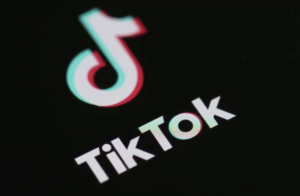Social media can hold a scary, addictive power over its users — and can turn almost anything in a trend in just seconds. This power can turn almost any video into to, viral content — and ultimately let creators turn dangerous behavior into trending content.
Many of these viral social media “challenges” may seem harmless — like, for example, trying to swallow a spoonful of cinnamon. But doctors say accidentally inhaling the powder could cause health risks.
These challenges pop up all the time, gaining traction on platforms like TikTok, and especially on the app’s “Explore” page. As people like and share them, even more users attempt the challenges.
“Our body is meant to withstand a lot of stressors and a lot of, you know, the everyday type of demands,” said Dr. Leslie Gonazalez a resident physician at Cook County Hospital in Chicago. ”But when we push our bodies past a certain point, it can only handle so much and that when these challenges can go south.”

This past summer, The Verge reported seven children under the age of 15 died after attempting a challenge that encourages users to choke themselves with belts, strings, or similar items, known as the “blackout challenge.”
The “sleepy chicken challenge,” which encourages social media users to marinate their chicken in NyQuil, prompted the U.S Food and Drug Administration to issue a warning against the dangers of medicine misuse.
According to the FDA, the challenge sounds silly, but can be very unsafe: Boiling a medication makes it much more concentrated and changes its properties in other ways. Even if you don’t eat the chicken, inhaling the vapor can cause high levels of the drug to enter the body.
Many of the participants in these challenges are young adults and children, especially those who are more involved on social media. Dr. Gonzalez believes many parents are not aware of the risks.
“It’s really up to the parent to be a little bit more present when children are consuming this type of media,” she said, “and having some safeguards around when they can consume, how they can consume media.”
Why do people keep doing these challenges? And why do children and teens seem more at risk? Dr. Gonzalez explained that key parts of younger people’s brains aren’t yet fully developed.
“Our frontal cortex of our brain is the part of the brain and makes decisions,” she said. “For the child who is of that young age or somebody who has a process, they’re going to be more susceptible to these types of videos and going through these challenges because they haven’t fully developed the skills necessary to be able to decide ‘Hey, perhaps this isn’t the best idea.’”
The pressure of popularity children and young teens feel, and their desire to be liked by others can explain why they participate in these challenges as well.
“We were young children at some point,” Dr. Gonzalez said, “and we also want to be liked, and we want to be popular. Now, in this day and age, what is popular is being popular on social media.
Dr. Gonzalez mentions that a strong household support system can help minimize the dangers of these videos and being able to talk to their family and children. Being more aware of in what their children are doing and what sort of videos they’re watching on social media may help give them more insights on the dangers in doing such challenges.

 Tweet this Video
Tweet this Video Share on Facebook
Share on Facebook Share via E-mail
Share via E-mail

